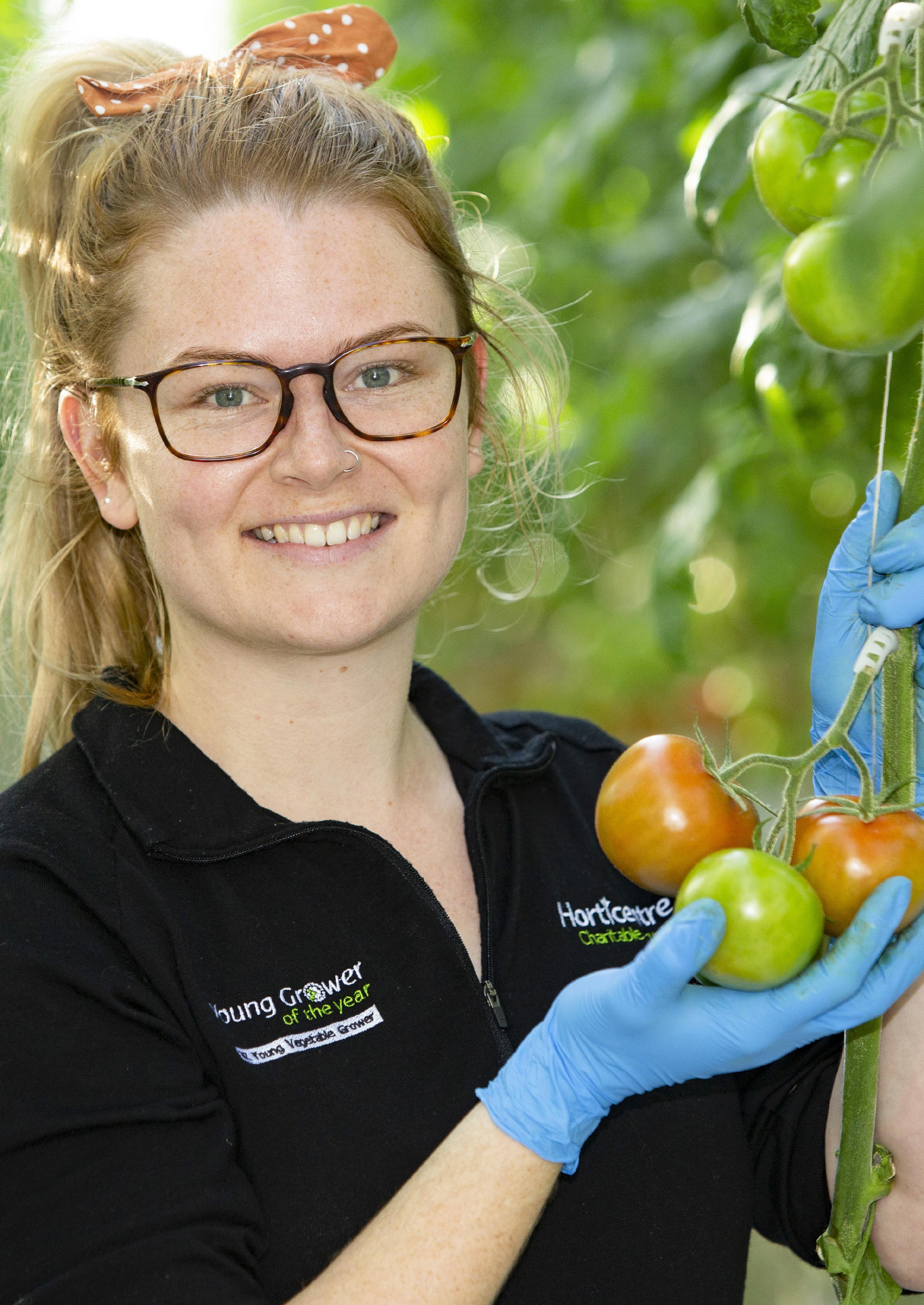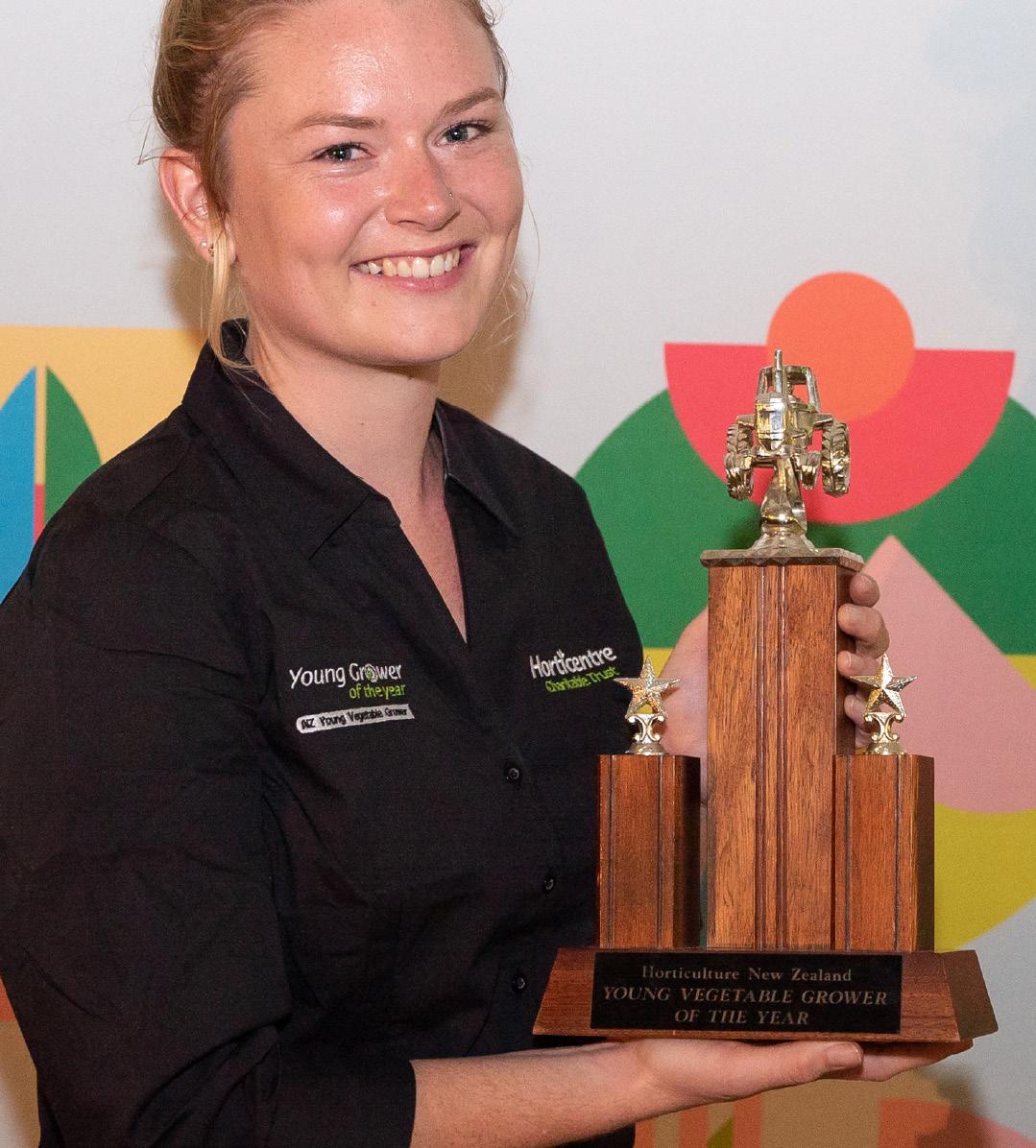
4 minute read
INTERVIEW
from EastLife August 2021
by Times Media
Photo Wayne Martin
www.eastlife.co.nz
Feetham wins, boots and all
Becoming Young Grower of the Year is not just about winning competitions, it’s about growing knowledge, in more ways than one, as JON RAWLINSON discovered.
She already has one title under her belt but Flat Bush local, Heather Feetham, is not putting her feet up yet.
“I am watching who wins the other [regional Young Grower of the Year] competitions and doing a little background research,” she smiles. “From my experience I have a bit of confidence so, hopefully, I can bring the same luck and skill next time.”
During her regional round at Pukekohe in May, the production manager from T&G (formerly Turners and Growers) was faced with a range of challenges designed to put her industry knowledge and skills to the test.
“It was the first time I’d entered. I went in for the experience more than anything so I was super stoked when I won. I’m very competitive so I definitely wanted to win but I didn’t expect to,” she says. “I enjoyed the practical exercises and went well in the quality checking and pest and disease [identification], but my strengths were the marketing module and the speech. I do like to use my head.”
The next step for Heather is the national competition in Wellington, September 22-23. A win there will qualify her to take on finalists from a diverse range of industry sectors – from floristry and landscaping to winegrowers and more – at November’s Young Horticulturist of the Year contest.
Winning (approximately) $2000 in prize money so far, Heather could yield even more rich pickings. Although she’s not prepared to make any firm plans just yet, the enthusiastic 26 year- old has some idea of how she will invest her winnings. money] for industry-related selfdevelopment and although I’m not too sure how I’ll use it yet, it would be awesome to go back to Australia and learn a bit more about the industry over there.”
Born and raised in Adelaide, Heather moved to New Zealand after studying agricultural science at university. On deciding to stay on this side of the ditch, she moved Kohimarama then on to Flat Bush early this year. Heather has worked at T&G’s covered crops site – which produces tomatoes – in rural south Auckland for the past two years.
One of the primary focuses of the young grower contests is to encourage Kiwis to pursue careers in horticulture. Border closures, due to the pandemic, have made it even more vital that New Zealand produce home-grown talent. “There has been a big push trying to get more people into the industry, which is great. [job security] is a massive bonus,” Heather says. “The industry, as a whole, is ‘feeling the sting.’ It was a little challenging last summer as we would usually employ backpackers, but we had some great university students as well as people who had lost their jobs in other industries. We managed but we needed to change and adapt.”

T&G’s covered crops’ operation isn’t strictly seasonal but increased demand for its tomatoes during summer requires more hands to the pump. Heather is hopeful next summer will see an easing of border restrictions thanks to increased levels of vaccination, with more exemptions made for skilled workers. say ‘no’ [to more overseas labour]. Even then, we need to keep the experience [of closed borders] in our mind going forward; we need to take away our lessons from Covid. I think the pandemic has caused a rethink; ensuring we have a contingency plan is crucial.”
Although growing food is as ‘down to earth’ as it gets, modern advances in agritech have changed the way the world is fed. In some ways, new recruits into the primary industries need to be as au fait with IT as they do with a spade.
“We’re still seeing progress, even since I’ve been in the industry. Our glasshouses have very technical growing systems [mostly for climate control] and we also have a labour tracking app to help us keep track of staff achievements, which is great. This is a high-tech operation.”
One of the largest greenhouse sites in New Zealand, Heather’s ‘office’ includes a growing area spanning approximately 10ha. Asked if growers are beginning to ‘dream of electric sheep’, she laughs.
“I get the gist of what you mean! More jobs could be mechanised in future, which will increase efficiency in production. The more efficient and productive a growing operation is, the better. But, at the same time, it is a bit of a balancing act and there’ll always be a need for people.”
However, where there are people, there needs to be housing; but housing must not compromise premium soil, Heather adds.
“It’s a touchy issue. Again, it’s about balance. We need to house people but we also definitely need to protect our best growing land. Plans need to be carefully considered.”

Heather Feethan with her trophy.










